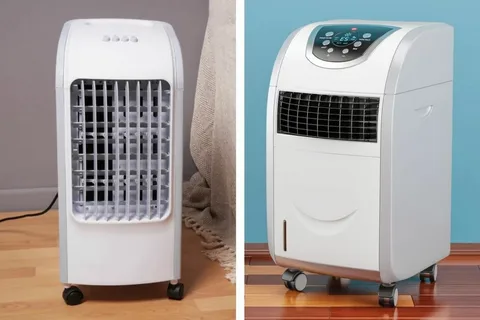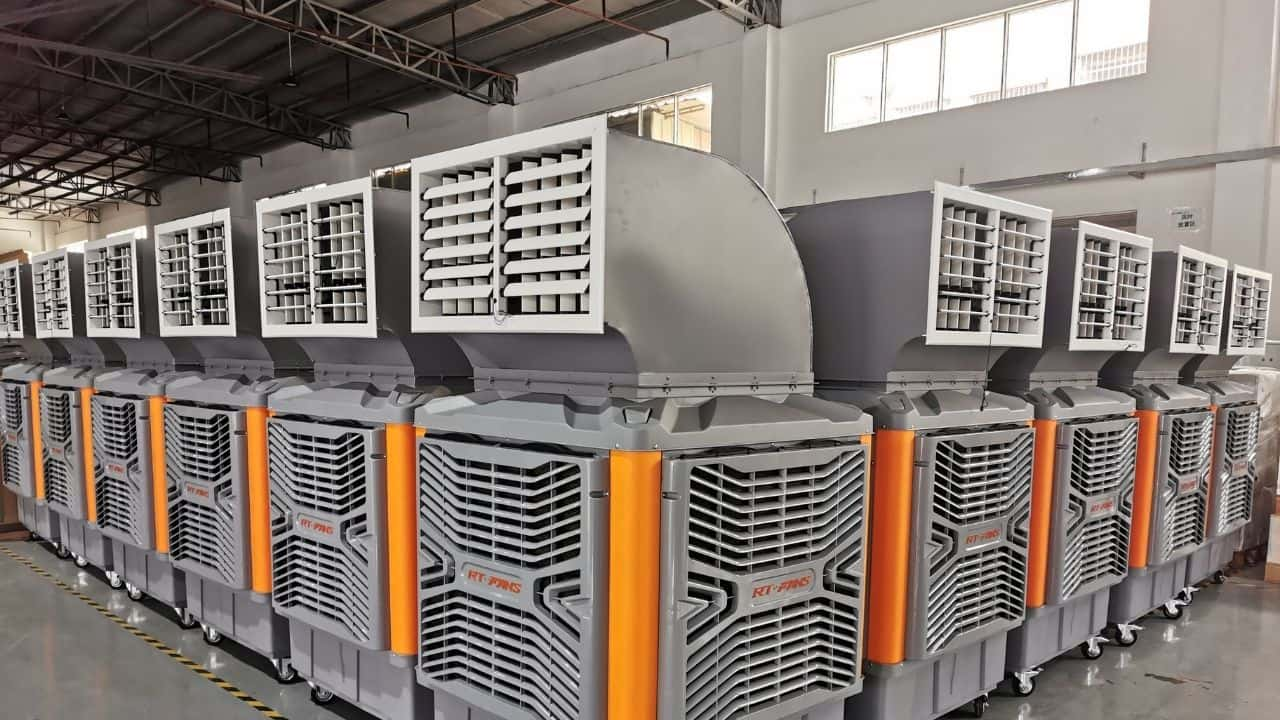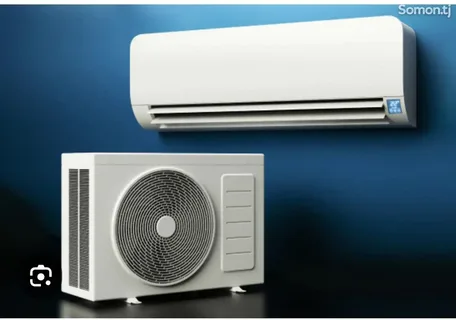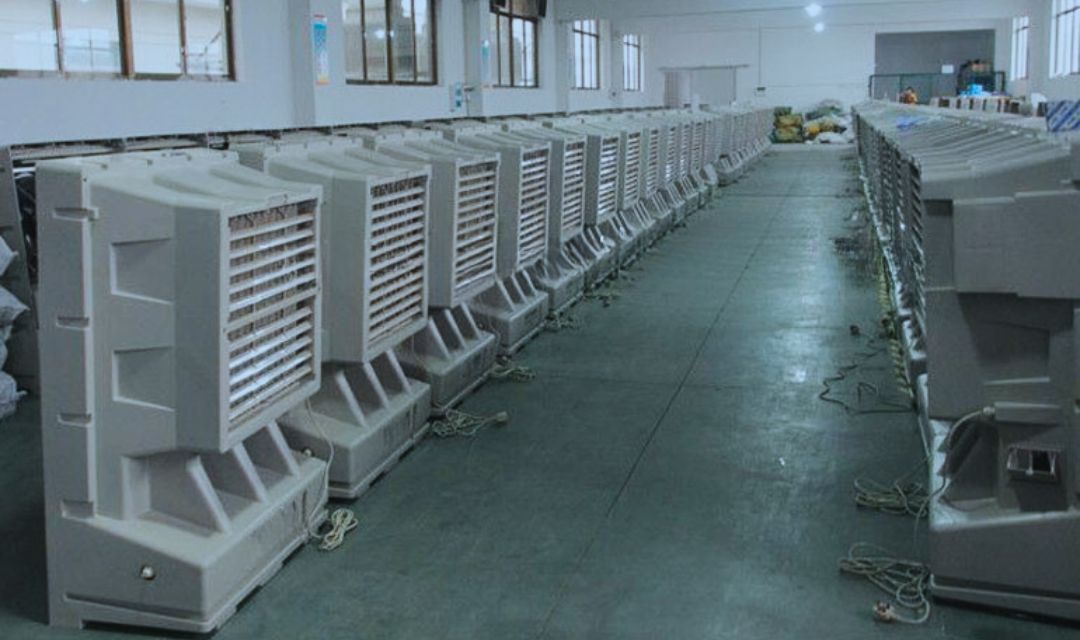Introduction: Choosing the Right Cooling for Restaurants
The restaurant owners are in a dilemma of choosing the best cooling system that suits them; evaporative air coolers or AC cooling. According to the U.S. Department of Energy, one of the biggest energy costs in the foodservice business is cooling, which may consume 28-35 percent of total energy expenditure. As the utility rates increase and the restaurant wants to retain the comfortable dining nature, the selection of a system can or will ruin or enhance the budget of the restaurant and the experience of the customer.

The evaporative air cooler is a cheaper and less damaging alternative that allows the use of more stable air conditioners, which have accurate temperature control in all weather conditions. The optimal decision is determined by such factors as weather, the type of restaurants, and financial objectives. This article presents a comparison of factors related to the cooling system comparison that comprises cost, energy efficiency, comfort, and maintenance of the cooling system used by the owners of the restaurant in order to make an informed decision.
Evaporative Air Coolers vs. Air Conditioners: The Big Question

In choosing the cooling system that suits best in restaurants, the owners have to consider the advantages and disadvantages of evaporative air coolers and conventional AC systems. Evaporative coolers are also inexpensive, energy saving, and fit well in dry climates, thus they are the best in the budgeted restaurants that have outdoor seating. Though more costly to install and maintain, traditional ACs provide reliable cooling in any climate, which is essential in fine dining or humid climates.
This article decomposes the major differences in cost, energy consumption, comfort and maintenance as well as climate suitability to direct restaurant owners to the correct restaurant HVAC options to meet their specific needs.
Cost and Installation Breakdown

Evaporative Air Coolers:
- Reduced Upfront Cost: The cost of a restaurant evaporative cooler that is of high quality to serve 2,000 square feet is between 2,000 and 4,000, which is much lower than the cost of the AC systems.
- Easy Set-Up: Coolers are often portable or can be set up with minimal infrastructure, which means that they can be ready in a few hours.
- Budget-Friendly: Suits little to medium sized restaurants or patio restaurants.
Traditional Air Conditioners:

- More Expenditure on Startup: A similar AC would be estimated between $6,000 and 12,000, including ductwork and professional setup.
- Complex Installation: It needs permanent infrastructure, including ducts and electrical upgrades, which adds to the cost and length of installation.
- Long-Term Dedication: Ideal in the case of established restaurants which are thinking of remaining in a single location.
As an illustration, a casual dining restaurant in Nevada installed an evaporative cooler at a price of 3,000 dollars as compared to the approximated cost of 10,000 dollars on an AC system which saved 70 percent in initial cost. Nevertheless, with humid weather conditions where accuracy is not an option, AC can prove to be worth the price.
Energy Efficiency and Operating Costs
Evaporative Air Coolers:
- Use a water pump and fan that use 70-80 percent of the energy that AC units use, according to ASHRAE tests.
- Costs to operate are as low as $500-800/year at a $0.15/kWh which is at a medium-sized restaurant.
- Eco-Friendly Restaurant Cooling: Fridgeless, minimizing the environment.
Traditional Air Conditioners:
- Depend on compressors that require energy of 3-5 kW per hour which cost between 2,500-4,000 every annual to cover similar spaces.
- More electricity consumption, particularly in dining rooms or open ones.
- Install refrigerants such as Freon that have bigger carbon footprint.
Case Study: A mid-sized Arizona cafe replaced their patio and indoor dining areas with evaporative coolers and reduced the monthly cooling expenses by 35% (saving of 150-200). This proves why the evaporation cooler vs air conditioner restaurant comparisons tend to favor coolers where the climates are dry.
Comfort and Performance: Guest Experience Matters

Evaporative Air Coolers:
- Grows in dry, hot conditions (e.g. Southwest U.S.), and cools itself by 15 to 25oF by evaporation.
- Fresh air circulation, with the elimination of stuffiness, and the introduction of natural humidity, which makes arid areas more comfortable.
- Best in open areas such as the patios where the customers love a natural and breezy atmosphere.
Traditional Air Conditioners:
- Provide accurate temperature management (e.g. 72 F in all weather).
- Perform work at all climates, such as humid climates where evaporative coolers become ineffective.
- May become stuffy because of re-circulated air but with modern systems, this can be countered with ventilation.
Comfort of customers is essential in restaurants. A fast-casual chain in California cited that evaporative coolers placed on their patio raised the dwell time by 20 percent of the time spent by the customers enjoying the fresh and cool air. Nevertheless, the fine dining restaurants usually like using AC due to its capacity to maintain constant temperatures, which is in line with high-end standards.
Maintenance and System Lifespan

Evaporative Air Coolers:
- Minimal maintenance is needed Simple design: clean water tanks and change pads after 6-12 months.
- The annual maintenance is between 100 and 300 dollars based on usage.
- Life span: 510 years under good care.
Traditional Air Conditioners:
- Complex systems require routine maintenance to be done such as checking of refrigerant, changing filters and cleaning of ducts.
- Maintenance costs per year: $ 500 to 1000, most of the time having to hire professional HVAC technicians.
- Life expectancy: 1015 years, but it can be expensive to repair it.
Evaporative coolers are also a viable option of restaurant HVAC alternatives as they usually save restaurants thousands of dollars in maintenance over a period of 10 years as compared to AC systems.
Side-by-Side Comparison Table
The differences in the comparison of restaurant cooling systems are summarized in the following table:
| Feature | Evaporative Coolers | Traditional AC |
| Initial Cost | Low–Medium ($2,000–$4,000) | High ($6,000–$12,000) |
| Energy Consumption | Very Low (0.5–1 kW/hour) | High (3–5 kW/hour) |
| Climate Suitability | Dry/Hot (e.g., Southwest U.S.) | All Climates |
| Comfort Level | Good (fresh air, depends on humidity) | Excellent (precise control) |
| Maintenance | Low–Moderate ($100–$300/year) | High ($500–$1,000/year) |
| Eco-Friendliness | Very High (no refrigerants) | Medium–Low (uses refrigerants) |
| Best Use Case | Outdoor/Patio, Budget Dining | Fine Dining, Humid Regions |
This air coolers vs AC comparison points out the trade-offs that the owners of restaurants need to evaluate.
Climate Suitability for Each Cooling System
The climate has a crucial influence on the selection between evaporative air coolers and AC:
- Dry/Hot Climates (e.g., Arizona, Nevada, Middle East): Evaporative coolers are shining, providing effective cooling at one hundredth of the cost of AC. Their cooling of 1525 o C is best suited towards the desert.
- Humid/Tropical Climates (e.g. Florida, Southeast Asia): It requires AC systems, because evaporative coolers are ineffective when the humidity level is more than 50%.
- Hybrid Solutions: Hybrids are used in many restaurants such as, AC system in the inside and evaporative coolers on the patios. Using this method a Texas-based chain saved 25 percent on energy, a trade off between comfort and cost.
Recommendations by Restaurant Type
The most appropriate cooling system in restaurants will be based on the requirements of the establishment:
- Fast Food & Casual Dining: Evaporative coolers are economical to operate, fast to set up and are suitable in high-turnover areas where cost is a factor.
- Outdoor Dining and Cafes: Evaporative coolers provide greater comfort to the outdoor environment and open-air spaces, and attracts customers who are environmentally friendly.
- Fine Dining: AC systems provide the exact climate control that is needed in a high-end environment, and it is a high-quality experience.
- Large Chains/Mixed-Use Hybrid systems (AC indoors, evaporative coolers outdoors) maximize energy consumption and respond to various requirements.
Pro Tip: Check with an HVAC engineer to calculate the cooling load of your restaurant (CFM or tonnage) so that you can size your system correctly, and so that your system can be as efficient and comfortable as possible.
Conclusion: Which System Is Right for You?
The decision on whether to install evaporative air coolers or AC depends on the choice of balance between budget, climate, and customer expectations. Evaporative coolers are environmentally friendly restaurant coolers, reducing power bills by 80 per cent and performing well in dry environments. The traditional AC systems offer reliable and accurate cooling to all environments but are associated with an increase in costs. With assessing the type, location, and financial aspirations of your restaurant, you can choose the most appropriate cooling method applicable to restaurants that induces savings and satisfaction to the guests.
Are you ready to maximize cooling in your restaurant? Assess your requirements using KoolAir, a market leader in restaurant HVAC alternatives, and estimate the possible savings nowadays.
